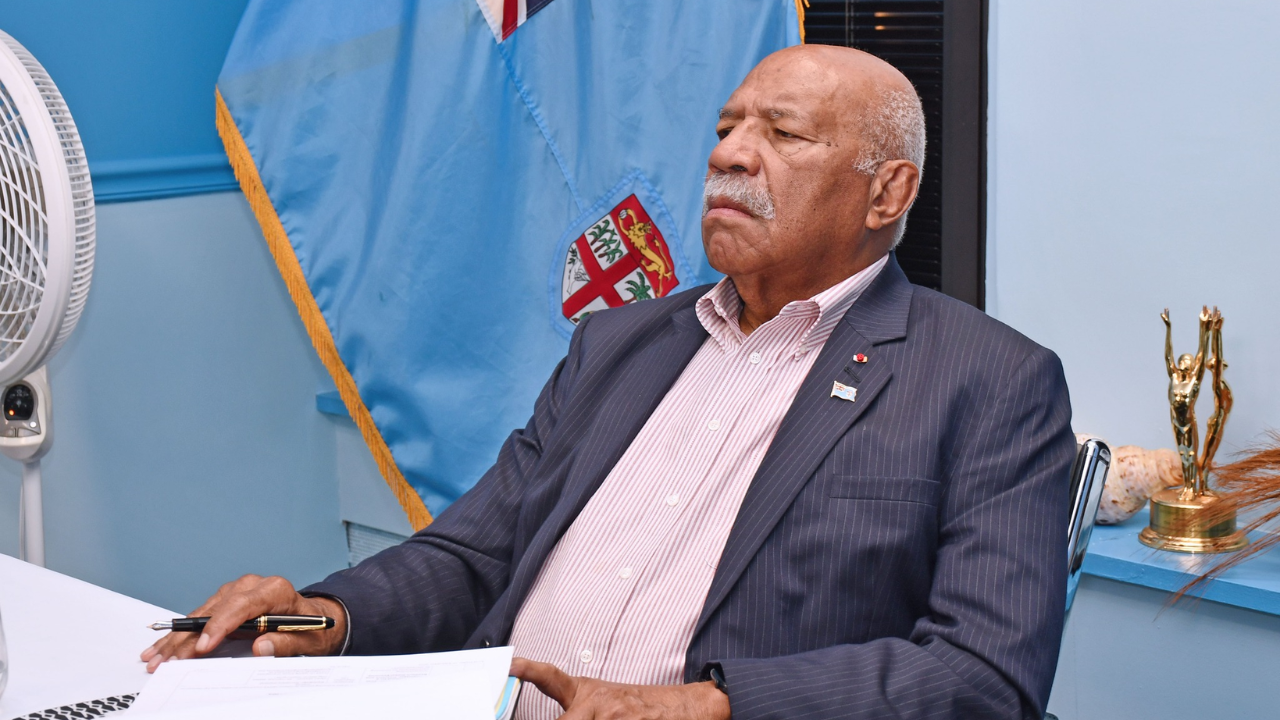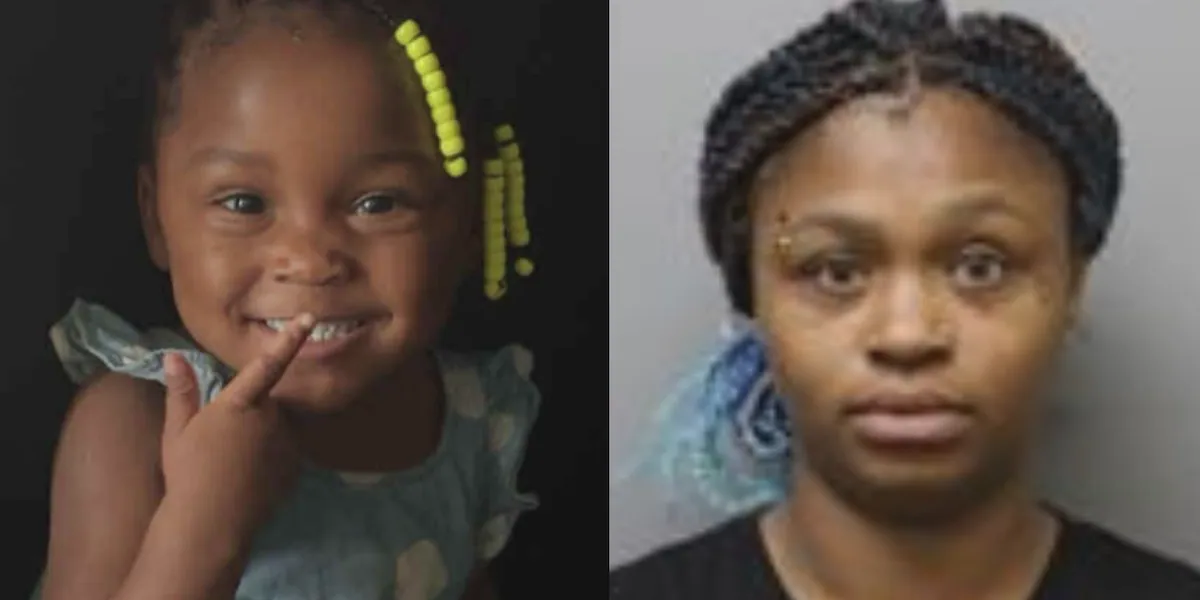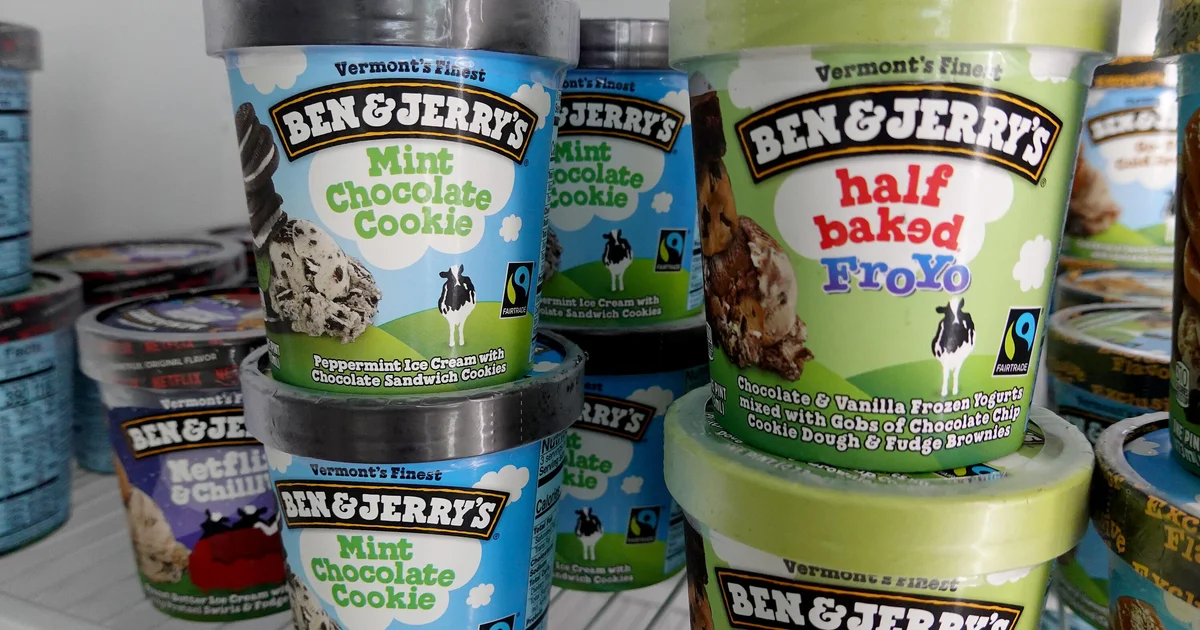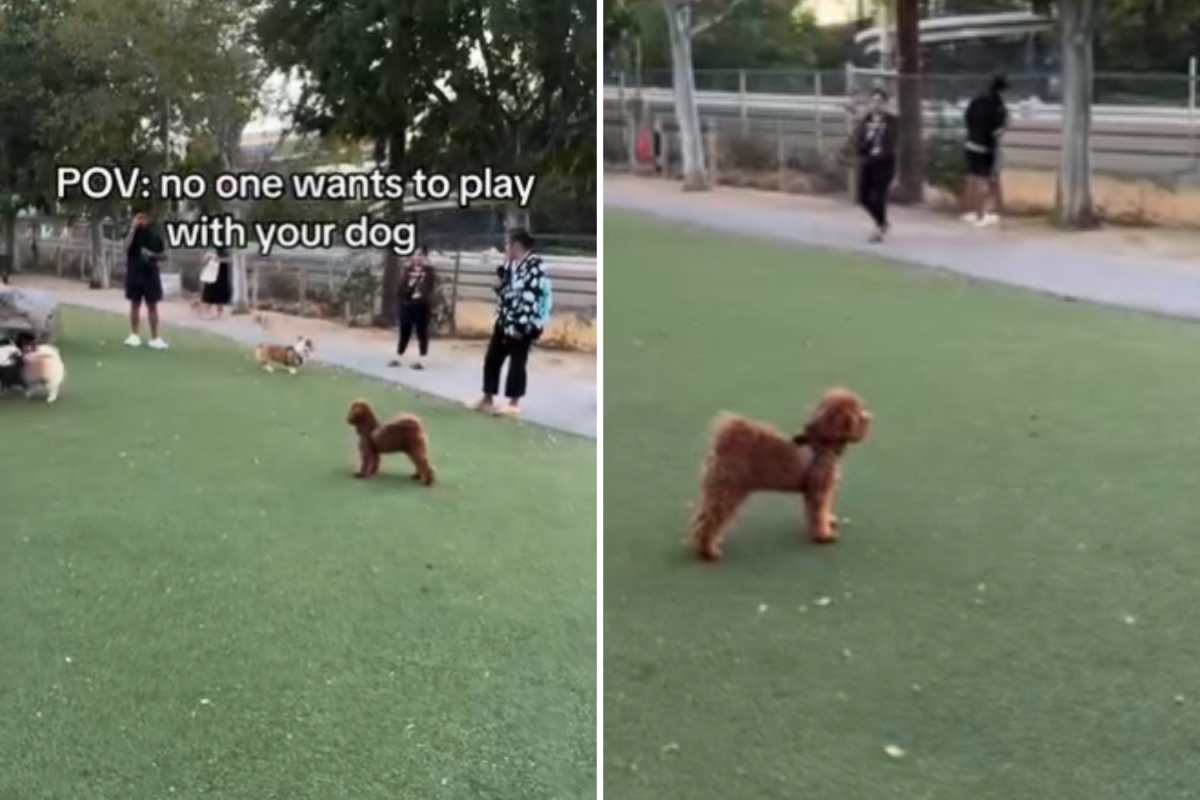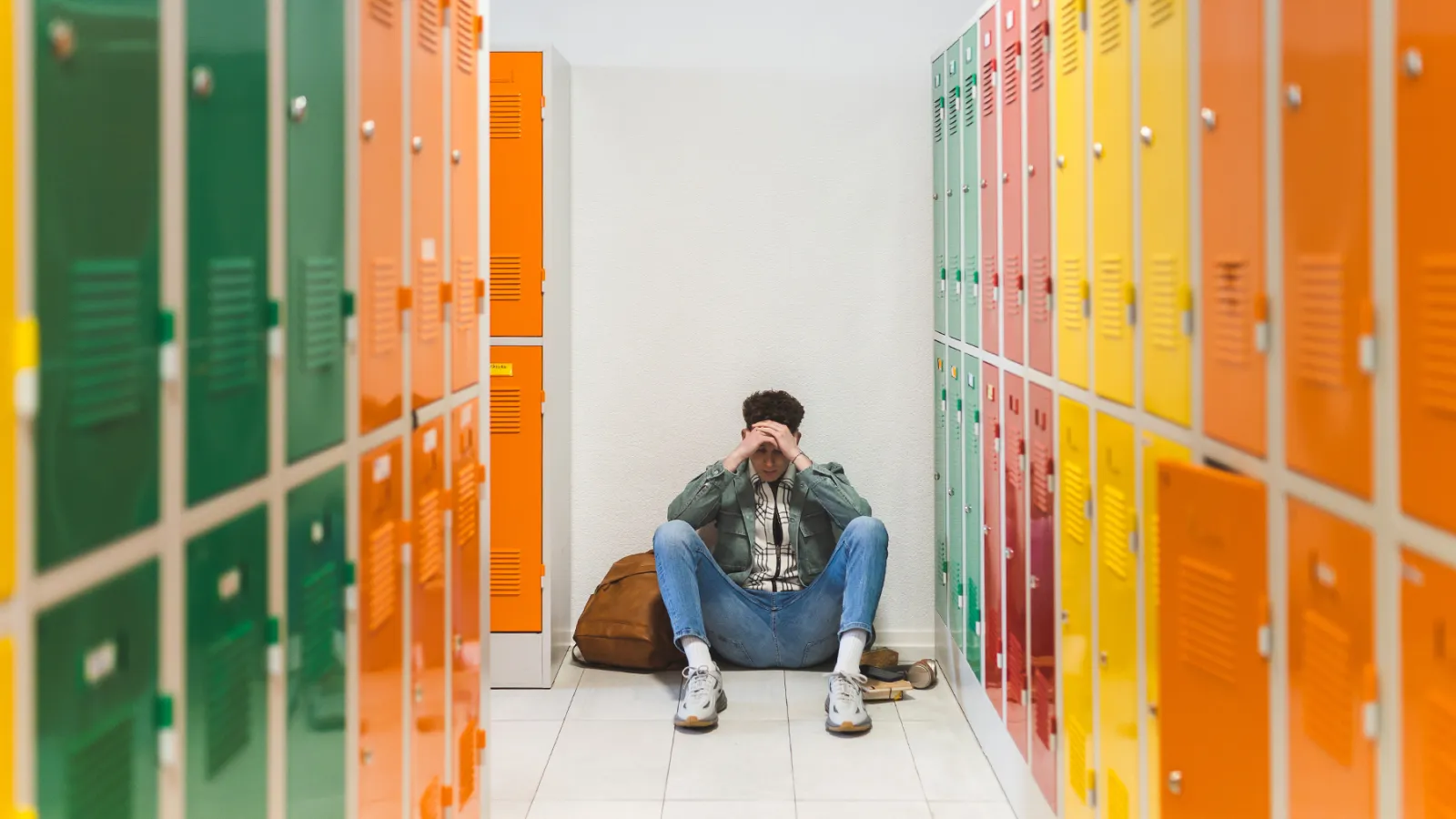
That was the day the floodgates opened: the October morning in 2022 that I couldn’t hold it down anymore. I’d been up all night sweating my academic future, sweating the New York Yankees’ future; trying to sweat anything but my algebra exam, which was scheduled for second period the next morning. All but unslept, I staggered up at 6 a.m … and the ropes in my stomach backflipped. Bolting to the bathroom, I barfed so hard that my eyeballs ached from the pressure. I was loud enough that I woke my sisters down the hall. “Eww, Jack, stop it — you’re gross!” they yelled. “I’m gonna go tell Mom!”
But Mom already knew, because I’d woken her, too. Loping down the hall, she found me on my knees, spitting yellow bile into the bowl. She asked if I’d caught a bug and needed to go to urgent care. I played it off as a case of nerves and said I’d be late if I didn’t get going. But in my friend’s car to school, I held a Ziploc to my mouth, gagging into the bag. My throat was scorched, my tongue was swollen — and the acid would not stop coming. Somehow, I pushed my way through the day and even managed to ace the exam. I went home that afternoon famished and faint. I hadn’t been able to choke down a bite.
But a snack and a drink would have to wait: My mom was at the door with questions. She asked me how my day had gone — then drilled down about my “nerves.” I hedged, saying it was the first time I’d panicked because of school, omitting the many nights I’d tossed and turned for hours. She pressed me about prior attacks; I confessed that there’d been a few, but nothing quite like this. She opened her laptop, Googled severe anxiety, and landed on the story of my life. Every symptom Google spat out rang bells in my head — sweaty hands, knotted stomach, shaky legs, racing thoughts; there were nights where all I heard was the thump of my boom-boom heart. Then there were the rituals I was enslaved by: the pair of lucky shoes I always wore on test days; my go-to herbal shampoo on midterm mornings. On the one hand, it was a relief to see that others felt these things. On the other hand — man, it was a lot.
Editor’s picks
My mom hugged me hard, said she was sorry I was struggling, and asked if I wanted to see someone about it. I balked, saying, “No! I have this handled.” At the time, the idea of therapy felt like admitting defeat, like putting a spotlight on myself when all I wanted was to blend in. I convinced myself that if I just pushed harder, I could muscle through it alone. But two weeks after the last attack, it happened again. I was up till dawn, ran to the bathroom, and dry-heaved en route to school.
This time, my mom wasn’t waiting with questions: She’d booked me an online session for that afternoon. I was shocked and stung by what felt like a betrayal. But as I sat through the Zoom, answering the therapist’s questions, the knots in my stomach unwound. My therapist told me straight out that I wasn’t alone in my angst. She’d helped a lot of kids learn to manage their symptoms, though anxiety had no “cure,” she said. It would take rigor and practice to get on top of my fears — but I’d see changes if I did the work. Between sessions, she sent me links about other kids living with stress. I learned that one in three teens have chronic anxiety — and a third of those have anxiety so great that it turns to panic disorder.
Inspired by those sessions, I searched for tools focused on meditation and mindfulness to help me take full control of my emotions. My school’s website had links to breathing techniques and calming, sound-spa music. I tried those things and found them only so helpful: the zen wore off after an hour.
One night, my out-of-town uncle came to dinner and saw me picking nervously at my food. “Hey, I meant to tell you,” he said: “A friend of mine uses this app called Headspace. He says it helps a lot with his anxiety.”
Related Content
That simple recommendation turned into a revelation. What started as a personal lifeline would eventually grow into a mission to make sure other teens who felt like me could find the same tools.
AFTER DINNER THAT NIGHT, I opened the Headspace app and was wowed by its options. They were running a free trial at the time; I signed up for their kickoff program, a series called “Managing Stress.” It was divided into a month of one-week courses, with exercises called “Mindful Pushups” and step-by-step how-to’s from experts. I learned from those talks that it takes time to master stress, and that, thousands of years ago, stress was our savior, the thing that kept our species alive. It drove us to hunt and gather, tipped us to danger, and pushed us to compete for partners.
After weeks of Mindful Pushups — mini-meditations where you focus on pleasant thoughts while doing cadenced breathing — I awoke one morning and thought to myself: “Whoa! I just slept through the night.” In the following weeks, Headspace asked me about my triggers: the fears underlying the panic. My fear was actually two fears tied together: the fear of failure and the loss of control. I could study till my eyes glazed, pull a week of all-nighters, and still not know I was ready for an exam. Headspace taught me that those fears were pointless: No one controls anything in this world. By the end of that first month, I had a big exam, and didn’t wake up running to throw up. And that voice in my head — the one bullying me to work harder — was growing a little fainter by the day. Clearly, the tools were working for me.
Months later, when my free trial of Headspace ended, I re-upped as a paying customer. But waking the next morning, it hit me in the head: There were kids at my school — and many other schools — who needed the app but who didn’t have $70 to join. The problem is epidemic: In 2024, the sociologist Jonathan Haidt would publish his landmark book, The Anxious Generation, coining a term for my age group. A study that same year in the Journal of Adult Development found that anxiety among Gen-Zers is four times more common than in Baby Boomers, and roughly double the rate in Gen-Xers. Kids my age are profoundly uneasy, and clearly struggling to cope.
In the spring of ’23, I messaged Headspace in hopes of connecting with someone in community outreach. I wrote that I was a high-school freshman who’d been rescued by the app, and wondered if there was a way to make it less pricey for other teens. Shockingly, an executive wrote me back, wanting to get a meeting on the books. Over Zoom with that executive and her aide, I broached an idea I’d been working on, something called Project GenZen. It would strive to help provide low-income teens with access to Headspace and other wellness resources. They loved the idea, saying they’d been looking for a teen to authentically rep the app to school-age kids. Their studies showed that kids who used it for 30 days reported a 32 percent reduction in stress, and long-term improvement in symptoms.
That winter, I cold-called public schools in New York City, talking up the merits of the app. The response from school leaders was swift and strong: Within months, students across New York’s boroughs had free access to Headspace, available to any teen who wanted it. But I’d held off calling the leaders of my own school, fretting about being judged by the kids next to me. Till one day, the next spring, I saw a girl have a panic attack in the hall before an exam. It was the catalyst I needed to push past shame and speak my truth aloud. The next day, I stood in front of the student government, sharing my stories of pre-test night-sweats and last-second dashes to the bathroom. When I finished talking, there was pin-drop silence; I thought I’d just committed social suicide. Then a hand went up, and another, and another: Kids poured out their own anguished stories.
After the meeting, a senior administrator at my school approached me and asked to connect her with Headspace. Within weeks, posters appeared on the walls of my school, offering Headspace to kids who clicked a QR code. Hundreds of teens did so — but not my varsity lacrosse teammates. They called the app a sign of weakness. I told my Headspace contacts about the stigma, then did my own homework. I pulled together public clips of athletes talking openly about stress and focus, Chelsea striker Raheem Sterling singing the praises of meditation and basketball legend Sue Bird on staying composed in big moments, and shared them around the team group chat. That started to lower the eye-rolls. A few skeptics even replied with their own examples — Simone Biles, Naomi Osaka, Michael Phelps, Giannis Antetokounmpo, all speaking candidly about mental health. The tone shifted. Project GenZen was beginning to lift off — but I could see it still needed another push.
THEN SOMEONE TOLD ME about a first-of-its-kind program at the University of Virginia. The school had just opened its Contemplative Sciences Center, a 57,000-square-foot facility on campus that looked like a sanctuary from the future. A steel-and-glass commons that overlooked its own pond, it housed laboratories that scanned the effects of sound and light on human brain-wave patterns; ashtanga yoga studios accessible to the student body; and reflection rooms that mirrored the sensations of nature. I wrote to UVA in the spring of 2024, telling them a bit about Project GenZen and conveying my interest in their program. They wrote back, offering a summer internship; I very gladly accepted.
When I showed up on campus last July, the CSC was staging a soft opening. Touring its commons, I walked into a room that illuminated sound and color. Hundreds of crystal blocks made up its walls: The lower ones channeled the green of the lilies on the surface of the pond outside. The upper blocks throbbed and pulsed a deep blue, reflecting the pond’s windblown currents. I felt, rather than heard, the whoosh of water through the sensors in those blocks: I was fully immersed without getting wet. I sat on a bench and let the ripples wash through me, drifting like a lily in the breeze.
I met a couple of CSC instructors that day and asked them about their Compassionate Schools Project. They explained that it was a syllabus for grade-school students, derived from a decade of working with public schools in Louisville, Kentucky. Its aims were threefold: to teach kids social and emotional skills from kindergarten through fifth grade; give them mindfulness tools and breathing techniques to manage stress and setbacks; and ingrain good habits around diet and exercise as a passport to healthy lives. CSC was in the process of adapting the program and offering it to thousands of school kids in other states.
And what did clinicians learn from the data they collected? That the students in those schools gained focus and confidence, learning to problem-solve in and out of class. Those effects were especially strong in “high-poverty schools,” where kids made big strides in “emotional resilience,” a key predictor of positive outcomes in life. Here was the last piece of the puzzle I’d been assembling: data-driven practices that could be adapted for older students and boiled down to five-page pamphlets.
Working with an instructor, I spent weeks at CSC compressing years of learnings to four booklets: Testing Anxiety; General Anxiety; Depression; and Fear of Missing Out. Each of those pamphlets had instructions for spotting symptoms; for learning how those symptoms spiral — and techniques to head them off before they do. The work I did at UVA carried over into my school year. I finished designing the pamphlets in February of this year, and sent printable PDFs to schools and organizations in New York, Kansas, and Kentucky that are preparing to roll out the programming this fall. By the time I graduate next June, I’ll have data to report on how those booklets, and Headspace, helped stressed-out schoolkids self-soothe.
IN THE MEANTIME, I have my own data to report: After years of meditation and Mindful Pushups, I’ve never felt more relaxed. I just wrapped a pressure-packed junior year and didn’t have a single panic attack or a pre-dawn dash to the bathroom. Yes, I still get tense before exams, and yes, I occasionally feel nauseous. But instead of fighting my body and losing, now my body and I fight together against our enemy, anxiety.
Trending Stories
At the first sign of tension, I go into my bag and pull out the Square Breathing tool. I inhale for five seconds; hold for five seconds; exhale for five seconds; and wait for five seconds. I repeat as needed till the tension ebbs — while thinking about as little as possible. If scary thoughts come, I don’t spiral, I re-center — focusing on my breath, not the fear. At bedtime, I do something called the Body Scan: a limb-by-limb lullaby to my parts. I start with my head, relaxing my eyelids while recounting how much my eyes saw today. Then my nose, feeling air go in and out and smelling the aroma of my room. Next, my jaw: I clench, and let it go. Then shoulders: Flex, release… and feel them sink into the bed.
